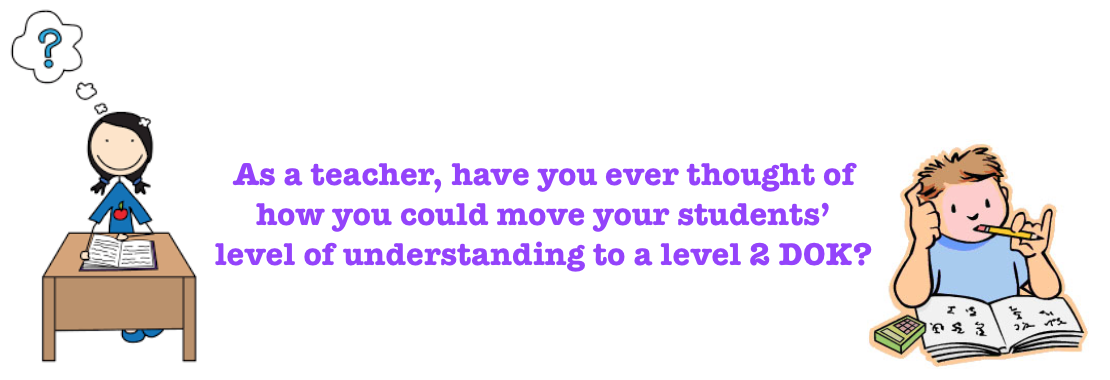Depth of Knowledge, DOKs, are an important part of student achievement. They are especially useful in understanding content that is nationally tested: math, reading and science. They help both teachers and students to understand content at a deeper level. Most students’ depth of knowledge is at a level one. A DOK level 1 is surface level comprehension that is simply recall and reproduction.

Teachers can begin by asking Questions to differentiate, classify, make inferences, and check conceptual understanding. This will help students to explain relationships, sorts, and classifications.
Next teachers can provide examples and non-examples to build conceptual understanding. Students will be able to make comparisons, and distinguish example/non-example, relevant-irrelevant, and fact-opinion.
Teachers should use Graphic Organizers to show relationships or organizational schemes. This will help students to compile and organize information which creates a deeper understanding of knowledge.
Matching readers with texts is something that elementary teachers already do and that secondary teachers should think about. This strategy helps students to gradually increase their reading ability and helps them to navigate complex texts.
The “Think aloud” teacher strategy allows students to explore possible options and connections. It also explains the steps that are needed to complete a task.
Examples of Tasks
- Math: Solving routine, multistep math word problems, interprets simple graphs and tables, retrieves information and uses it to solve a problem
- Reading: Creating a timeline, retrieves information and uses it to solve a problem or answer a question
- Science: Making observations, organizing data, using models, interprets simple graphs and tables, retrieves information and uses it to solve a problem or answer a question
- Writing: Creating a caption, paragraph, summary, a survey and using models
